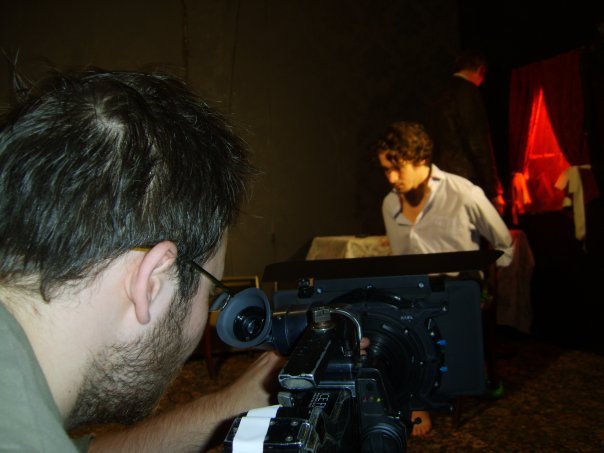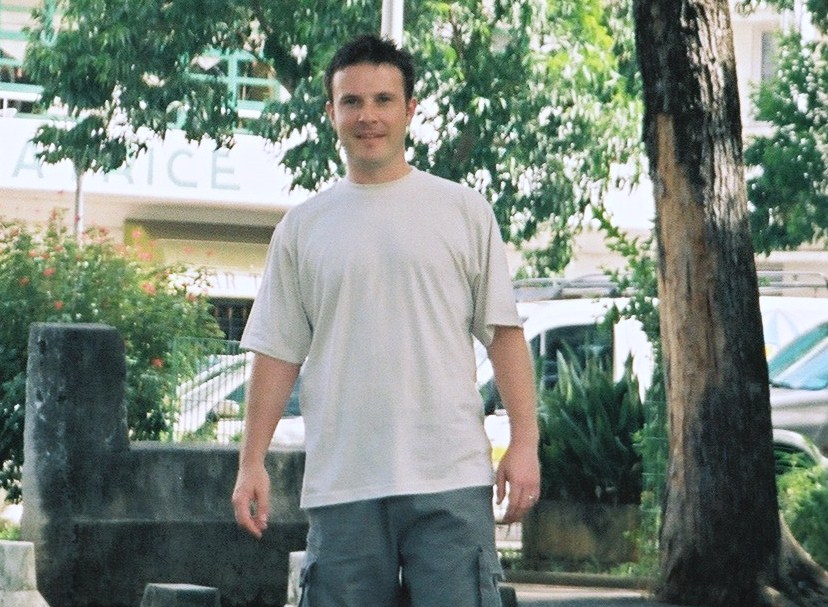ASK & DISCUSS
INDEXUpgrading from Sony Z5...
11 years, 2 months ago - Dean Letts
Hi!
I've had my Sony Z5 for around 5 years and, even though it's done me well, I'm looking into getting a new camera.
Most of the stuff I do is ENG type stuff and corporate so I've been looking at the Sony PMW300K2 because of the 50Mbps and XAVC updates. My only concern is that with the introduction of 4k cameras being rolled out, I don't want this camera to become 'obsolete'...I'm looking to invest in this camera for 5 or so years.
So my question is, should I wait around to see what 4k brings or will the 300k2 still be fine?
Thanks everyone.
Only members can post or respond to topics. LOGIN
Not a member of SP? JOIN or FIND OUT MORE
11 years, 2 months ago - John Lubran
Z5 is a 25mbps with three 1/3" cmos chips; whilst the EBU and BBC requirements for HD are 50mbps, minimum of three 1/2" chips and 1920x 1080. The PMW 200 and 300 meet all the specs. The Canon 305 has been accepted by BBC but still falls short of EBU having only three 1/3" CMOS. The two Sony's are selling like hot cakes for a good reason.
11 years, 2 months ago - Tony Oldham
Many of the TV production companies want shooters to have an XF300/ XF305. I wish I had one and they come in at £4k ish. It is on the BBC approved camera list.
11 years, 2 months ago - Susi Arnott
John, do you have a PMW200 yourself?
I bought XF100 as a stop-gap in 2014 and it's been great, but now wondering what's next; want a better lens, but no real need for 'broadcast' spec so was looking at the new XF200 but would be daft not to consider the PMW
Hungry to hear other experiences/enthusiasms!
11 years, 2 months ago - Franz von Habsburg FBKS MSc
You really are all caught by the balls, aren't you? You've bought the hype and now there is no end. It was only a few years ago you were raving about the Z1 and now it's passé! Let me explain the Japanese economy: once a product is made and in the market with an SP, it is then illegal to up the price despite the fact that your rent has gone up and your workers have just been awarded a massive pay rise, so what is your answer? You produce another model, virtually the same but with slight, maybe just cosmetic, differences, which you can then sell at a higher price. Yippee! You finance the Japanese economy and you have bought the hype and can tell all your friends that you have the latest model Sony!! I don't recall anyone saying "wow, I've just upgraded to an 18mm from a 16mm" etc. and yet Kodak 35mm grain is around 2 micron whereas the smallest Sony pixel is still only 4 micron, so which has the best definition?? Then you get your digital into your Avid and instantly look for how you can add the film look... Messrs Jackson and Jumper at NASA at the JPL in Pasadena developed digital for a good reason (and yes, their pixels were 30 micron with 15 micron spacing and a bit depth of 2^8-1) but they never thought that the BKSTS would one day talk of 8k or even 10k. I still think of that light bulb scene with Richard Burton in Who's Afraid of Virginia Woolf!
11 years, 2 months ago - John Lubran
Many of us certainly are caught by the balls Franz; but it's not the hype consequential to the imperatives of the Japanese economy that’s responsible, it's the demands of broadcasters and the EBU. If they say they won't accept a programme because it was not shot according to their specifications then no amount of opinion expressing about the merits of this or that will be relevant.
It's not an arcane fact that high end analogue film is capable of very high resolution that is only now being matched by digital technologies, as is also the fact with films greater latitude in terms of colour and contrast. I have never asserted differently. The issue is about the law of diminishing returns. The exponentially developing qualities of digital, which unlike with film, have not yet reached any plateau of evolution, as demonstrated by 10K and the emergence of advanced compression codecs that will shortly lift the issue of digital technologies into a whole new dimension, capable of replicating the purest analogue mediums and then adding pure magic on top. It seems extremely unlikely to me that any form of cellulose even vaguely on the horizon can ever compete with digital in terms evolution. But it’s not just about quality; it’s also about cost and the ergonomics of production. For all some of us retain a well deserved soft spot for film, film is still relatively a great big pain in the neck and does not help the democratisation of the artfulness and enterprise of film making because of its disproportionately demanding processes.
With regard to my continuing affection for the Z1, I’m glad you’ve raised the point. We have used just about every video format and many film formats since 1985 and each evolutionary step made a real impact on production options. We made good money and great use of Hi8 when that came out and were responsible for a number of broadcast productions that for the first time had the tools to produce daring and edgy programmes that whilst not fully meeting SD broadcast specs got close enough to them so that viewers hardly noticed. (Moving Vision was the premier facility in the UK for a while in maximising Hi8 quality for broadcast) Then came DV, DVCAM and HDV each of which advanced the potential for ultra low cost, user friendly, low impact film making that allowed a whole new culture and approach to the art. The fact that we can now look back at earlier evolutions and judge them within the context of today’s capabilities should not denigrate the perceived appreciative opinions historically held. However, with reference to the Z1, I regard that camera as seminally unique, even now after nine years or more, the Z1 is still capable of mixing it with much newer high end broadcast cameras. It’s one of the longest innings since the advent of video; only just beaten by Betacam SP.
Amongst other things we play with all the HDV cameras including the Z5 and Z7. Despite the higher 1080x1920 resolution of the newer cameras compared with the Z1’s 1080x1440 I’m not at all convinced that the Z1 provides inferior pictures, indeed I often prefer the look from the Z1. Where I believe there was hype was with the introduction of the CMOS imaging device. It was presented as a major improvement, being cheaper to make and being more energy efficient, but it seems to me that the Z1’s CCD’s look better. The last generation of CCD’s were excellent; no doubt the CMOS will soon catch up and pass them.
For all of that, it’s the EBU/BBC specs that matter for anyone wanting to make broadcast HD programmes. Right now, despite some minor and anomalous exceptions on the BBC acceptance list (such as the Canon XF300/305), cameras that properly meet those clear specifications begin with PMW 200. I have used the 200 and explored its operational qualities, it does everything it ought to. Great pictures with useful tools and options. The 1/2" CMOS chips are clearly better than 1/3" in terms of latitude in all aspects. No doubt a 4K version is about to emerge and that one will be as profound in its affect upon the democratisation of production and the diminishment of onerous scientifically academic and financial limitations as was the impact of the Z1 almost a decade ago.
And the 10K version? ‘Wish I was ten years younger!
11 years, 2 months ago - Franz von Habsburg FBKS MSc
PS the 1/3" is still Mickey Mouse as the 1/2" is comparable to 16mm for DoF. Arri use single chip as the back focus is critical if you're demanding a 35mm look. I bought a Sony R1 as it has a 25mm CMOS Chip as first used by Arri to get the same DoF as 35mm.
11 years, 2 months ago - Alève Mine
Believe it or not, I've been looking for those empirical graphs of the drop in price of equipment over time (price of first hand equipment)
This guy says every time cumulative production doubles, camcorder prices drop by 14%: http://www.aabri.com/manuscripts/10557.pdf
But how do we know at which rate units are produced?
And this says "normal component price reduction rate averages about 2% to 4% per quarter." http://www.ttieurope.com/object/articleID-158.html
Although that may not reflect 1:1 on the end product.
Homework anyone? Assignment: based on the above and the bbc requirements and 4K rollout, when should we buy what?
11 years, 2 months ago - John Lubran
When the Canon XF300 came out it was unique, being the first 50mbps camera that was also a compact hand held at a fraction of the price compared with other 50mbps cameras; for that reason the BBC put it on their approved list even though it did not quite meet EBU standards because of the smaller 1/3" CMOS chips. The Sony PMW 200 then came along at little extra cost which met EVERY required specification for broadcast HD. I don't understand why folks are still suggesting the Canon XF's as desirable without reference to the PMW's? Does the Canon provide some special facet I've not yet learned of?
11 years, 2 months ago - Alève Mine
For your type of content you probably don't need to worry about it continuing to be distributed in an up-to-date format at any time in the future. On the other hand, you sound likely to get a 4k in 5 years. So I guess what you need to decide on is: is the need you feel to upgrade subjectively worth the price of the camera that you will get now less the net present value of the drop in price for the 4k camera you'll pick in 5 years as compared to today.
You may also want to consider the likelihood of availability of resources for you to buy another camera in 5 years. If you can assess that in some way. If the risk is high that you can't afford a new cam in 5 years, then you may want to get now the one that you'll want to use then, and take good care of it.
Do you know of any empirical graphs of the drop in price of equipment over time (price of first hand equipment) anywhere online? Something like a typical curve for that? That might help decide at least on the maximum price of the camera you should buy now. You can then find out if that maximum price is under that of any currently available cams that are more satisfactory than your Z5!
What is bugging you with the Z5?
11 years, 2 months ago - Adrian Bracken
I had the same dilemma, and when I was at MIPTV in Cannes this year (2014) I went to a 4k talk and demonstration. I'm sure 4k (UHDTV) will come, but the need for new TVs, cameras and the extended post production workflow (time therefore cost) indicated that it will be some years before any significant market penetration of 4k for TV. The "geeks" will tell you I'm wrong - perhaps I am, but I look on this from a commercial point of view - after all how many channels are actually HD even now? I bought a Conon XF305.!







